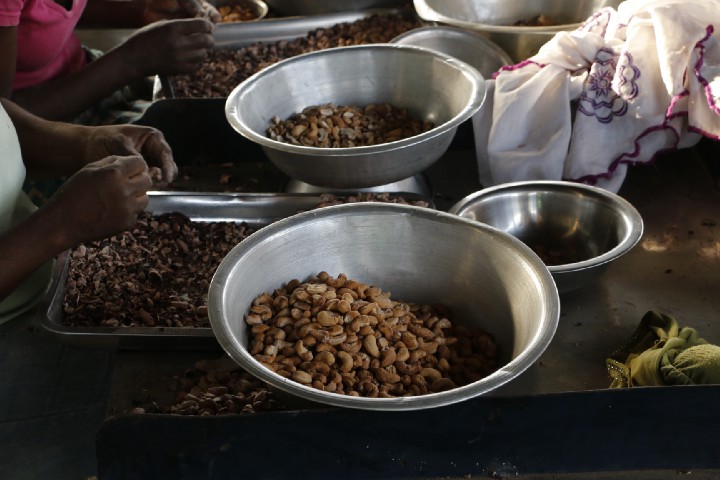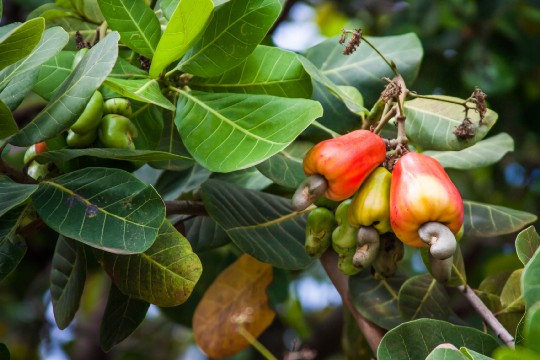Cashew Prices on a Rise
Cashew Prices on a Rise
Global demand for cashew is growing.
In 2016, cashew nut demand increased by 6.1 percent. In 2021, it is expected that cashews take over 29 percent of the global nut market. Whether the production volume growth can meet the increasing demand is uncertain. Compared to the 6.1 percent increment in demand, production volume increased only by 3 percent. Prices are expected to remain high, and the numbers are only to grow with resilient demand for cashew.
Cashew Nuts in Trading
There are different grade specifications for cashew trading: in-shell cashew (also referred to as raw cashew nuts) and shelled cashew nuts or cashew kernels, which are obtained after a series of processing steps.

Cashew nut processing requires technique and great attention--the inner soft shell contains rash-inducing chemicals that must be removed for consumption.
Shelled cashew nuts are then further classified adhering to standards of respective countries of export destination. Shelled cashew nuts are classified as: First Quality Fancy, the best quality kernel with no visible damages; Second Quality Scorched; Third Quality Special Scorched; Fourth Quality, Lightly Blemished Wholes (LBW); Lightly Blemished Pieces (LP); Blemished Wholes (BW); and Dessert, the lowest quality kernel that are speckled or blemished. For sizing, a kernel is designated with specific numbers that correspond to the number of counts per specific weight. The “180”, so-called “the king of cashews,” is the biggest kernel size. Kernels with the designated size number 240 are the second biggest, or the “Jumbo.” “240,” “320,” and “450” follow next, “320” kernels being the highest in availability and “450” being the smallest and cheapest.
Cashew Nuts Production

Cashew nuts grow on trees. The "apple" part is also consumed
Vietnam produces the first harvest of the season beginning in February with India’s crop following immediately. West African, Brazilian and East African crop harvest start shortly after, taking over the global cashew market until new crops from Vietnam are produced. Because the harvest seasons of the major cashew producing countries are intertwined, one poor harvest can significantly damage the global trade equilibrium of the entire season.
In 2015, the total world production volume of cashew reached its highest of 5,087,956 tonnes. Vietnam, Nigeria, India, Ivory Coast, Philippines, and Tanzania are the top cashew producers in the world. In 2016, it was reported that Vietnam produced 1.2 M tonnes of in-shell cashews, which accounts for 24.93% of world in-shell cashew production volume. Having produced 958,860 in-shell cashews in 2016, Nigeria covers about 20% of world in-shell cashew production. India produced 671,000 tonnes, and Ivory Coast produced 607,300 tonnes in 2016. Philippines and Tanzania followed up next, having produced 216,398 and 195,140 respectively.

World production of in-shell cashew (source: Tridge).
In 2016–2017 harvest season, the global cashew production was reported to be 30 to 40 % shorter (125,000 to 250,000 tonnes) than its average years, Vietnam only yielded 250,000 tonnes. Cambodia also suffered a poor harvest season. African cashew crops were at its average yield; however cashew kernel supplies remained low due to lack of processing facilities in the continent. India, also a big cashew producer, had a favorable crop season. However, since the domestic demand in India had spiked, India had stopped exporting, thus making a low contribution to the global cashew market.
(Noted: Numbers represent production volume of “In-Shell Cashews” or Raw Cashew Nuts).
Cashew Nuts Global Trade
In 2016, world’s imported quantity of in-shell cashew was 1,446,151 tonnes. West African nations such as Ghana, Nigeria, and Ivory Coast are leading exporters of in-shell cashews. Just in Ghana, over $900M worth raw cashews were exported. The major export destination of raw cashews from west Africa is India and Vietnam, which are two most significant importers of raw cashews and biggest exporters of shelled cashew.

India and Vietnam are two biggest importers of raw cashews by import value, USD (source: Tridge)
Cashew processing cost is the lowest in Vietnam, allowing Vietnam to remain as the most prominent shelled cashew exporter and in-shell cashew importer. India, once also a significant exporter of shelled cashews, has stopped exporting cashew kernels to meet the high demand in the domestic market.
Poor crop season in 2016–2017 resulted in a price spike: the price rose from $3.55–3.70 range to $5.00 to 5.10, which is a 35% rise. Raw cashews were priced even higher: the price reached USD 2400 per tonne. Although the current cashew season is forecasted to yield better amount, the demand, not only in Asia but also in North America and Europe remains resilient, and thus cashew price will likely remain high.
Changes in the Cashew Market in 2018: What to Expect?
During the last decades, African nations suffered from a lack of infrastructure. Raw cashews were exported at a low price; thus farmers were unable to make sufficient income from cashew compared to big processing countries like India and Vietnam. West African governments are building regional cashew processing facilities to stop exporting raw cashew at a low price to be further processed and sold at a higher rate. Vietnam and India had heavily relied on West African countries like Ghana and Nigeria, for raw cashew nut. West Africa’s movement toward implementing cashew processors is to make significant changes in the global cashew trade.
References
2.www.africancashewalliance.com/en/news-and-info/cashew-news.